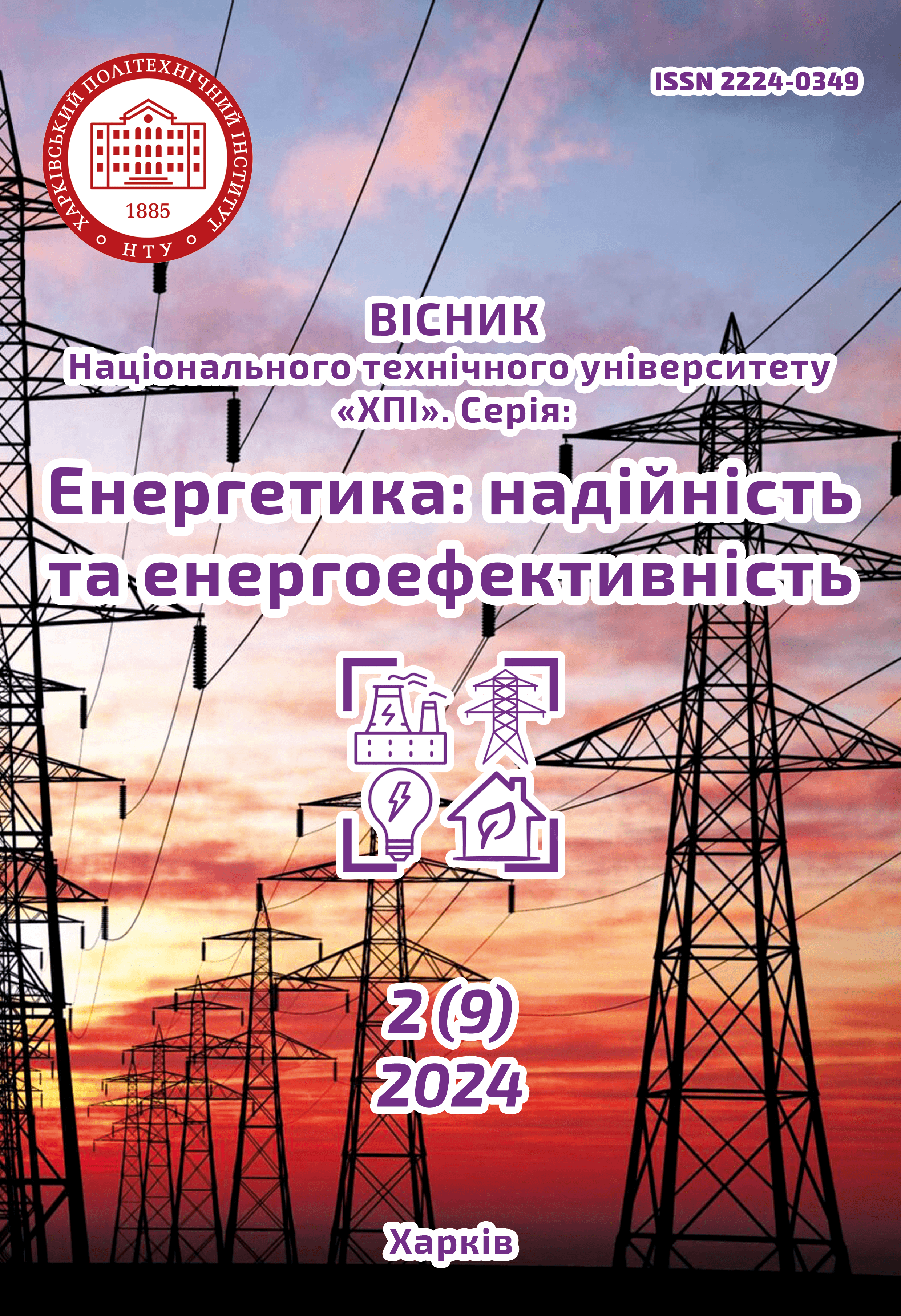Анотація
Зростання попиту на електроенергію та стрімке поширення електромобілів створюють значні виклики для низьковольтних розподільчих електромереж, зокрема для їх критично важливих компонентів, таких як розподільчі трансформатори. Інфраструктура, спроєктована для традиційних навантажень, стикається з ризиком перевантаження через високі пікові навантаження, спричинені неконтрольованим заряджанням електромобілів. У цій статті розроблено комплексний методологічний підхід для оцінки впливу процесів заряджання на довговічність розподільчих трансформаторів із врахуванням різних рівнів проникнення електромобілів, комбінацій електричних навантажень та локальних умов експлуатації. Дослідження базується на гіпотезі, що оптимізація графіків заряджання, зокрема перенесення його на непікові години, може суттєво зменшити швидкість старіння трансформаторів і підвищити надійність електропостачання. Запропонована методологія використовує модель на основі нечіткої логіки, яка інтегрує численні фактори, що впливають на експлуатаційні характеристики трансформаторів, включаючи температуру навколишнього середовища, вплив гармонійних спотворень, рівень компенсації реактивної потужності, наявність зворотних потоків енергії від фотоелектричних установок та ризики перевантаження. У роботі розглянуто сценарії заряджання на вимогу, заряджання в непіковий час та комбінований режим із використанням технології «автомобіль-домівка» (V2H), що забезпечує інтеграцію електромобілів як резервного джерела енергії для побутових потреб. Результати дослідження демонструють, що запровадження таких підходів дозволяє мінімізувати витрати на модернізацію мережі, забезпечуючи стабільність її роботи навіть за умов високого рівня проникнення електромобілів. Представлена методологія слугує основою для розробки адаптивних стратегій управління енергетичними ресурсами, спрямованих на покращення стійкості системи розподілу, подовження терміну служби трансформаторів та підвищення економічної ефективності інфраструктури.
Посилання
M. Usman et al., “A coordinated charging scheduling of electric vehicles considering optimal charging time for network power loss minimization”, Energies, vol. 14, no. 17, Aug. 2021, Art. no. 5336, doi: https://doi.org/10.3390/en14175336
“'Fit for 55': Delivering the EU's 2030 Climate Target on the way to climate neutrality”, Brussels, COM/2021/550 final, Jul. 2021. [Online]. Available: https://eur-lex.europa.eu/legal-content/EN/TXT/?uri=CELEX:52021DC0550
International Energy Agency, “Global EV Outlook 2023”, Paris, Apr. 2023. [Online]. Available: https://www.iea.org/reports/global-ev-outlook-2023
V. S. Nozdrenkov, I. M. Diahovchenko, M. V. Petrovskyi, and V. V. Volokhin, “Fuzzy logic-based estimation model of distribution transformers aging”, Bulletin of the National Technical University "KhPI". Series: Energy: Reliability and Energy Efficiency, no. 1 (8), pp. 86–93, Jul. 2024, doi: https://doi.org/10.20998/2224-0349.2024.01.07 (in Ukrainian)
J. McLaren, J. Miller, E. O'Shaughnessy, E. Wood, and E. Shapiro, “Emissions associated with electric vehicle charging: Impact of electricity generation mix, charging infrastructure availability, and vehicle type”, Office of Scientific and Technical Information (OSTI), NREL/TP-6A20-64852, Apr. 2016, doi: https://doi.org/10.2172/1247645
P. Rodríguez-Pajarón, A. Hernández, and J. V. Milanović, “Probabilistic assessment of the impact of electric vehicles and nonlinear loads on power quality in residential networks”, International Journal of Electrical Power & Energy Systems, vol. 129, Jul. 2021, Art. no. 106807, doi: https://doi.org/10.1016/j.ijepes.2021.106807
M. R. Khalid, M. S. Alam, A. Sarwar, and M. S. Jamil Asghar, “A Comprehensive review on electric vehicles charging infrastructures and their impacts on power-quality of the utility grid”, eTransportation, vol. 1, Aug. 2019, Art. no. 100006, doi: https://doi.org/10.1016/j.etran.2019.100006
D. Alame, M. Azzouz, and N. Kar, “Assessing and mitigating impacts of electric vehicle harmonic currents on distribution systems”, Energies, vol. 13, no. 12, Jun. 2020, Art. no. 3257, doi: https://doi.org/10.3390/en13123257
K. Qian, C. Zhou, and Y. Yuan, “Impacts of high penetration level of fully electric vehicles charging loads on the thermal ageing of power transformers”, International Journal of Electrical Power & Energy Systems, vol. 65, pp. 102–112, Feb. 2015, doi: https://doi.org/10.1016/j.ijepes.2014.09.040
G. Razeghi, L. Zhang, T. Brown, and S. Samuelsen, “Impacts of plug-in hybrid electric vehicles on a residential transformer using stochastic and empirical analysis”, Journal of Power Sources, vol. 252, pp. 277–285, Apr. 2014, doi: https://doi.org/10.1016/j.jpowsour.2013.11.089
N. B. G. Brinkel, W. L. Schram, T. A. AlSkaif, I. Lampropoulos, and W. G. J. H. M. van Sark, “Should we reinforce the grid? Cost and emission optimization of electric vehicle charging under different transformer limits”, Applied Energy, vol. 276, Oct. 2020, Art. no. 115285, doi: https://doi.org/10.1016/j.apenergy.2020.115285
T. S. D. Ferreira, F. C. L. Trindade, Y. G. Pinto, and W. Freitas, “New analytical method for analysing the effectiveness of infrastructure reinforcement in electric power distribution systems”, Electric Power Systems Research, vol. 182, May 2020, Art. no. 106250, doi: https://doi.org/10.1016/j.epsr.2020.106250
S. A. El-Bataway and W. G. Morsi, “Distribution transformer's loss of life considering residential prosumers owning solar shingles, high-power fast chargers and second-generation battery energy storage”, IEEE Transactions on Industrial Informatics, vol. 15, no. 3, pp. 1287–1297, Mar. 2019, doi: https://doi.org/10.1109/tii.2018.2845416
V. Boglou, C.-S. Karavas, K. Arvanitis, and A. Karlis, “A fuzzy energy management strategy for the coordination of electric vehicle charging in low voltage distribution grids”, Energies, vol. 13, no. 14, Jul. 2020, Art. no. 3709, doi: https://doi.org/10.3390/en13143709
V. Boglou, C. Karavas, A. Karlis, and K. Arvanitis, “An intelligent decentralized energy management strategy for the optimal electric vehicles' charging in low‐voltage islanded microgrids”, International Journal of Energy Research, vol. 46, no. 3, pp. 2988–3016, Oct. 2021, doi: https://doi.org/10.1002/er.7358
S. Li et al., “A multi-agent deep reinforcement learning-based approach for the optimization of transformer life using coordinated electric vehicles”, IEEE Transactions on Industrial Informatics, vol. 18, no. 11, pp. 7639–7652, 2022, doi https://doi.org/10.1109/tii.2021.3139650
N. Z. Xu and C. Y. Chung, “Reliability evaluation of distribution systems including vehicle-to-home and vehicle-to-grid”, IEEE Transactions on Power Systems, vol. 31, no. 1, pp. 759–768, Jan. 2016, doi: https://doi.org/10.1109/tpwrs.2015.2396524
M. Zou et al., “Optimization model of electric vehicles charging and discharging strategy considering the safe operation of distribution network”, World Electric Vehicle Journal, vol. 13, no. 7, Jun. 2022, Art. no. 117, doi: https://doi.org/10.3390/wevj13070117
G. Konstantinidis, F. D. Kanellos, and K. Kalaitzakis, “A simple multi-parameter method for efficient charging scheduling of electric vehicles”, Applied System Innovation, vol. 4, no. 3, Aug. 2021, Art. no. 58, doi: https://doi.org/10.3390/asi4030058
K. G. Firouzjah, “Profit-based electric vehicle charging scheduling: Comparison with different strategies and impact assessment on distribution networks”, International Journal of Electrical Power & Energy Systems, vol. 138, Jun. 2022, Art. no. 107977, doi: https://doi.org/10.1016/j.ijepes.2022.107977
P. Paevere, A. Higgins, Z. Ren, M. Horn, G. Grozev, and C. McNamara, “Spatio-temporal modelling of electric vehicle charging demand and impacts on peak household electrical load”, Sustainability Science, vol. 9, no. 1, pp. 61–76, Nov. 2013, doi: https://doi.org/10.1007/s11625-013-0235-3
V. Boglou, C.-S. Karavas, A. Karlis, K. Arvanitis, and I. Palaiologou, “An optimal distributed RES sizing strategy in hybrid low voltage networks focused on EVs’ integration”, IEEE Access, vol. 11, pp. 16250–16270, 2023, doi: https://doi.org/10.1109/access.2023.3245152
M. M. Rahman, E. A. Al-Ammar, H. S. Das, and W. Ko, “Comprehensive impact analysis of electric vehicle charging scheduling on load-duration curve”, Computers & Electrical Engineering, vol. 85, Jul. 2020, Art. no. 106673, doi: https://doi.org/10.1016/j.compeleceng.2020.106673
L. Liu and K. Zhou, “Electric vehicle charging scheduling considering urgent demand under different charging modes”, Energy, vol. 249, Jun. 2022, Art. no. 123714, doi: https://doi.org/10.1016/j.energy.2022.123714
K. N. Qureshi, A. Alhudhaif, and G. Jeon, “Electric-vehicle energy management and charging scheduling system in sustainable cities and society”, Sustainable Cities and Society, vol. 71, Aug. 2021, Art. no. 102990, doi: https://doi.org/10.1016/j.scs.2021.102990
A. Shahkamrani, H. Askarian-abyaneh, H. Nafisi, and M. Marzband, “A framework for day-ahead optimal charging scheduling of electric vehicles providing route mapping: Kowloon case study”, Journal of Cleaner Production, vol. 307, Jul. 2021, Art. no. 127297б doi: https://doi.org/10.1016/j.jclepro.2021.127297
IEEE Guide for Loading Mineral-Oil-Immersed Transformers and Step-Voltage Regulators, C57.91-2011, Institute of Electrical and Electronics Engineers, 2012, doi: https://doi.org/10.1109/IEEESTD.2012.6166928
“JRC Photovoltaic Geographical Information System (PVGIS).” European Commission. [Online]. Available: https://re.jrc.ec.europa.eu/pvg_tools/en/
I. Diahovchenko, L. Petrichenko, I. Borzenkov, and M. Kolcun, “Application of photovoltaic panels in electric vehicles to enhance the range”, Heliyon, vol. 8, no. 12, Dec. 2022, Art. no. e12425, doi: https://doi.org/10.1016/j.heliyon.2022.e12425
J. E. Caicedo, A. A. Romero, and H. C. Zini, “Assessment of the harmonic distortion in residential distribution networks: Literature review”, Ingeniería e Investigación, vol. 37, no. 3, pp. 72–84, Sep. 2017, doi: https://doi.org/10.15446/ing.investig.v37n3.64913
Voltage Characteristics of Electricity Supplied by Public Electricity Networks, EN 50160:2022, European Committee for Electrotechnical Standardization (CENELEC), 2022.
I. Diahovchenko, B. Dolník, M. Kanálik, and J. Kurimský, “Contemporary electric energy meters testing under simulated nonsinusoidal field conditions”, Electrical Engineering, vol. 104, no. 2, pp. 1077–1092, Aug. 2021, doi: https://doi.org/10.1007/s00202-021-01365-8
G. Tal, D. Chakraborty, A. Jenn, J. H. Lee, and D. Bunch, “Factors affecting demand for plug-in charging infrastructure: An analysis of plug-in electric vehicle commuters”, University of California Institute of Transportation Studies (UC ITS), Davis, CA, USA, UC-ITS-2019-42, Jan. 2020, doi: https://doi.org/10.7922/G2ST7N3K
Electric Vehicle Conductive Charging System – Part 1: General Requirements, IEC 61851-1:2017, International Electrotechnical Commission, 2017.
V. S. Nozdrenkov, I. M. Diahovchenko, M. V. Petrovskyi, and V. V. Volokhin, “Fuzzy model of compensation for aging factors of distribution transformers”, Electrical Engineering and Power Engineering, no. 2, pp. 7–17, Jun. 2024, doi: https://doi.org/10.15588/1607-6761-2024-2-1 (in Ukrainian)
J. Quiros-Tortos, L. Ochoa, and T. Butler, “How electric vehicles and the grid work together: Lessons learned from one of the largest electric vehicle trials in the world”, IEEE Power and Energy Magazine, vol. 16, no. 6, pp. 64–76, Nov. 2018, doi: https://doi.org/10.1109/mpe.2018.2863060
J. Zhang, J. Yan, Y. Liu, H. Zhang, and G. Lv, “Daily electric vehicle charging load profiles considering demographics of vehicle users”, Applied Energy, vol. 274, Sep. 2020, Art. no. 115063, doi: https://doi.org/10.1016/j.apenergy.2020.115063
Y. Varetsky and Z. Hanzelka, “Sizing filter reactors for industrial electrical grids”, Electrical Power and Electromechanical Systems, vol. 4, no. 1, pp. 1–14, 2022, doi: https://doi.org/10.23939/sepes2022.01.001 (in Ukrainian)
B. Dolník, Ľ. Šárpataky, I. Kolcunová, and P. Havran, “Sensing method using multiple quantities for diagnostic of insulators in different ambient conditions”, Sensors, vol. 22, no. 4, Feb. 2022, Art. no. 1376, doi: https://doi.org/10.3390/s22041376
Transformatory silovye masljanye obshhego naznachenija. Dopustimye nagruzki [Oil-immersed general-purpose power transformers. Permissible loads], GOST 14209-85, Ministry of Electrotechnical Industry of the USSR, Moscow, 1985.
Power Transformers - Part 7: Loading Guide for Mineral-Oil-Immersed Power Transformers, IEC 60076-7:2018, International Electrotechnical Commission, 2018.

Ця робота ліцензується відповідно до Creative Commons Attribution-NonCommercial 4.0 International License.
Авторське право (c) 2024 Валерій Станіславович Ноздренков, Ілля Миколайович Дяговченко, Михайло Васильович Петровський


